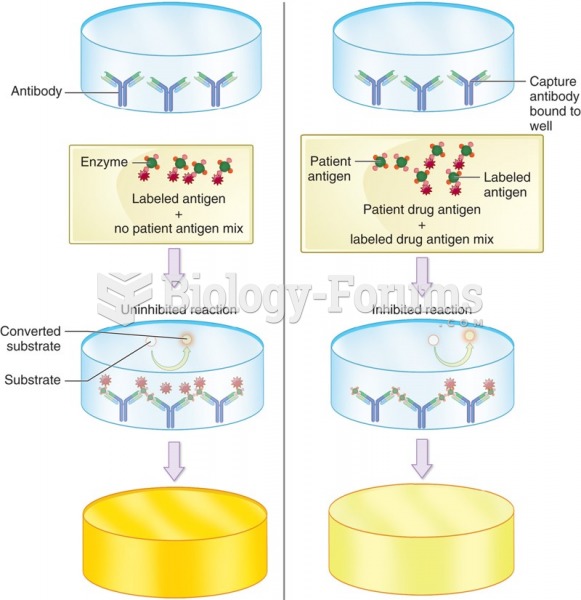|
|
|
Medication errors are three times higher among children and infants than with adults.
Bacteria have flourished on the earth for over three billion years. They were the first life forms on the planet.
In the United States, there is a birth every 8 seconds, according to the U.S. Census Bureau's Population Clock.
According to the American College of Allergy, Asthma & Immunology, more than 50 million Americans have some kind of food allergy. Food allergies affect between 4 and 6% of children, and 4% of adults, according to the CDC. The most common food allergies include shellfish, peanuts, walnuts, fish, eggs, milk, and soy.
All adverse reactions are commonly charted in red ink in the patient's record and usually are noted on the front of the chart. Failure to follow correct documentation procedures may result in malpractice lawsuits.







